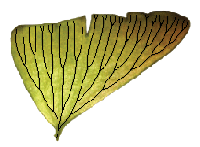Difference between revisions of "Phylogenetics: APE Lab"
| Line 7: | Line 7: | ||
|} | |} | ||
| − | == Installing APE and | + | == Installing APE and apTreeshape == |
| − | APE is a package written and | + | APE is a package largely written and maintained by Emmanuel Paradis, who has written a very nice book<ref>Paradis, E. 2006. Analysis of phylogenetics and evolution with R. Springer. ISBN: 0-387-32914-5</ref> explaining in detail how to use APE. APE is designed to be used inside the [http://www.r-project.org/ R] programming language, to which you were introduced earlier in the semester (see [[Phylogenetics: R Primer]]). apTreeshape is a different R package (written by Nicolas Bortolussi et al.) that we will use today. |
| + | |||
| + | To install APE and apTreeshape, start R and type the following at the R command prompt: | ||
| + | install.packages("ape") | ||
| + | install.packages("apTreeshape") | ||
| + | Assuming you are connected to the internet, R should locate these packages and install them for you. After they are installed, you will need to load them into R in order to use them (note that no quotes are used this time): | ||
| + | library(ape) | ||
| + | library(apTreeshape) | ||
| + | You should never again need to issue the <tt>install.packages</tt> command for APE and apTreeshape, but you will need to use the <tt>library</tt> command to load them whenever you want to use them. | ||
== Literature Cited == | == Literature Cited == | ||
Revision as of 23:41, 28 April 2009

|
EEB 349: Phylogenetics |
| This lab is an introduction to some of the capabilities of APE, a phylogenetic analysis package written for the R language. You may want to review the R Primer lab if you've already forgotten everything you learned about R. |
Installing APE and apTreeshape
APE is a package largely written and maintained by Emmanuel Paradis, who has written a very nice book[1] explaining in detail how to use APE. APE is designed to be used inside the R programming language, to which you were introduced earlier in the semester (see Phylogenetics: R Primer). apTreeshape is a different R package (written by Nicolas Bortolussi et al.) that we will use today.
To install APE and apTreeshape, start R and type the following at the R command prompt:
install.packages("ape")
install.packages("apTreeshape")
Assuming you are connected to the internet, R should locate these packages and install them for you. After they are installed, you will need to load them into R in order to use them (note that no quotes are used this time):
library(ape) library(apTreeshape)
You should never again need to issue the install.packages command for APE and apTreeshape, but you will need to use the library command to load them whenever you want to use them.
Literature Cited
- ↑ Paradis, E. 2006. Analysis of phylogenetics and evolution with R. Springer. ISBN: 0-387-32914-5